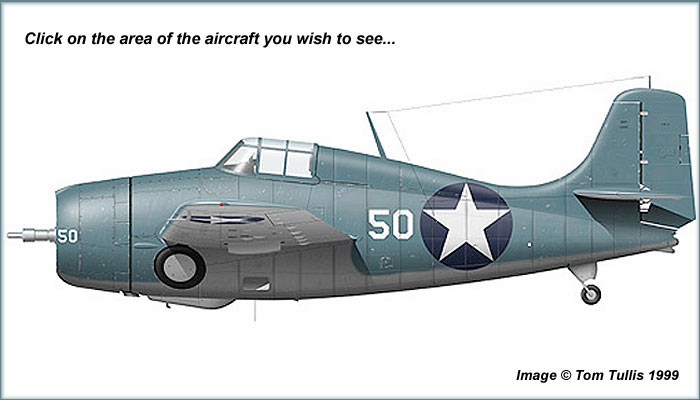
|
Grumman F4F Wildcat |
It would be hard to overestimate the importance of this tubby fighter to Naval Aviation history. In those dark days
immediately after the attack on Pearl Harbor, the US Navy had two frontline fighter types, neither of which were
as manouverable or heavily armed as the fearsome Mitsubishi Rei-Sen. What our boys lacked in equipment, however, they more than made up for in sheer guts and determination. Learning from bitter experience, new tactics were rapidly developed which would allow the US pilots to play to the strengths of the Wildcat (it's immense strength and high diving speed). Using these tactics, the Wildcat squadrons fought back and ultimately the seemingly inexorable Japanese advance was stopped at Midway.
This photo feature will be expanded as further pictures are made available (read: I've got a bunch to develop). In the meantime, I'm very pleased to present a great series of closeup pictures of an original F4F-3, the initial service model of the Wildcat, as well as the General Motors FM-2 (aka "The Hotrod"), the last Wildcat model to enter service. These photos were taken and graciously supplied by Ken D'Angelo of Jacksonville, FL. Ken was a member of Black Shadow Aviation's restoration team and his area of responsibility was in the cockpit. I'd like to thank Ken once again for taking the time to share these terrific photos with us, and I'm sure you'll enjoy them!
I would also like to thank Bill Devins for contributing some photographs of 72-F-7 at the National Museum of Naval Aviation in Pensacola, FL.

Here's Marine Lt. Tommy Mann in the cockpit of "his" Wildcat
at the rollout ceremonies at Black Shadow Aviation...